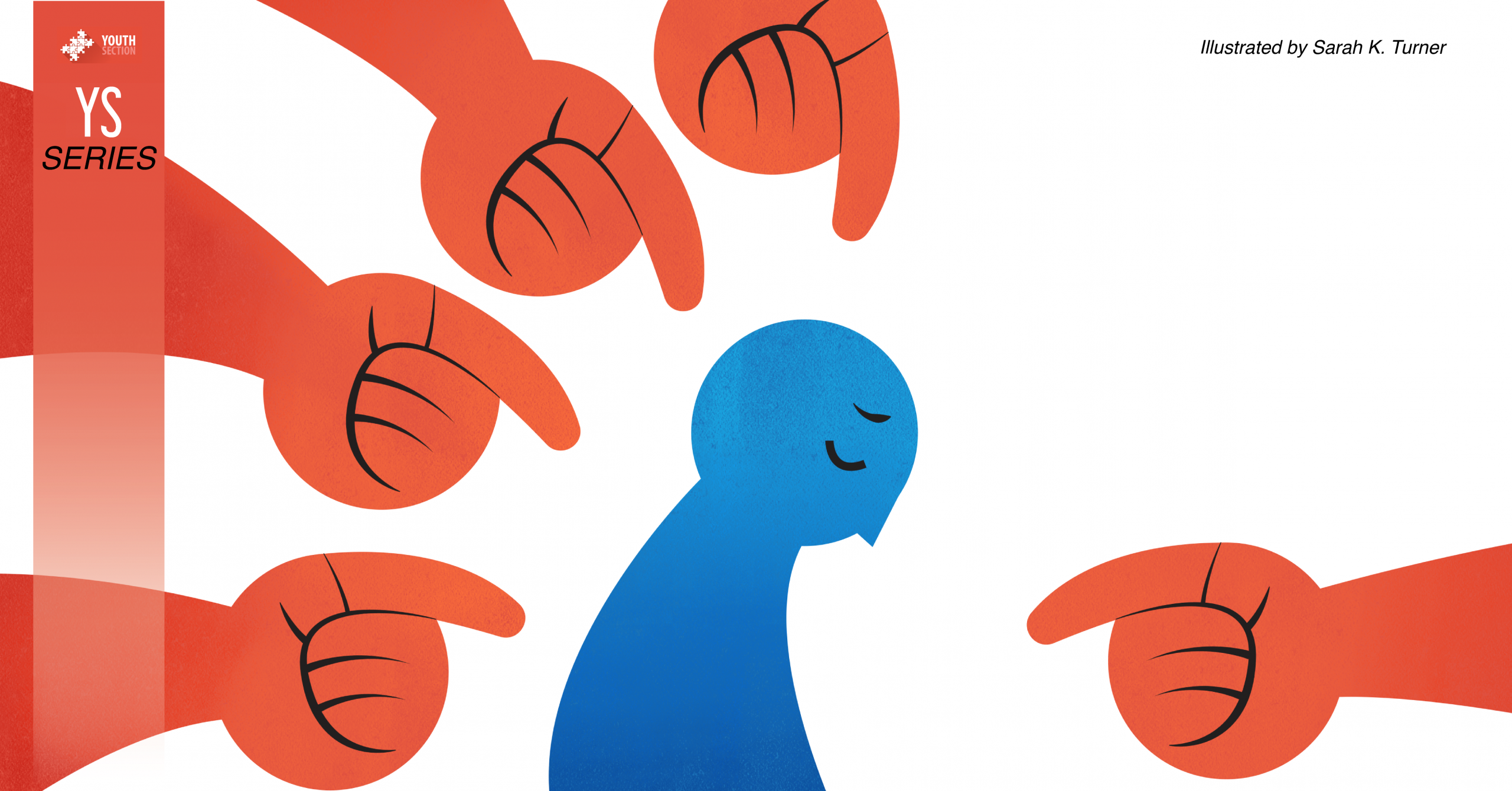In order to raise and create an individual with strong character and values, we have to start from the very first years of his life. An individual needs to have many positive factors during his lifespan in order to face the challenges of life and the harsh reality we live in. The goal of every family and school is to create an individual of principles who will become beneficial for himself and the society at large. A child cannot be raised and become an adult without the emotional support, love and care of the family, and respect of society. Frederick Douglas had wisely stated: “It is easier to raise strong children than to repair broken men.” The souls of human beings are fragile, especially the souls of children. From the very early years of childhood and youth takes shape the personality of each one of us. Everything, good or bad, leaves a mark in our life. Not just that, but even how we imagine and plan the future, and the views we have for ourselves is affected by the treatment and upbringing we had in the past. Whether we had good memories or childhood traumas, these will shape our future. The world out there is not that welcoming, nor supportive. We need to be aware and understand what happens with our children. We have to be prepared ourselves and then prepare our children and youth for what they will face from the early years of childhood and on.
What is bullying?
This question is of great importance because it deals with children and adolescents. It directly affects their life. We can define bullying as an intentional behavior to hurt and denigrate a person emotionally or physically. Bullying is an ongoing behavior that victims have to face for a long period of time in their lifespan. It can take the form of physical contact, words, or even more subtle actions. For a behavior to be considered bullying, it has to be aggressive and it must include
- Intention: the bully is well aware of what he is doing. His behavior is deliberate and aggressive to humiliate and hurt another person that is weaker than him.
- Power imbalance: kids who are stronger physically than others have the tendency to become bullies. But bullying cannot be just physical. The richest with a higher status become bullies as well. Or so-called kids with a higher level of popularity towards the ones not very popular.
- Repetition: Bullying behavior happens more than once, to one person or to a group of people.
Types of bullying
Bullying can take many forms. It cannot be just physical and emotional anymore, because society has evolved. Nowadays bullying can be physical, verbal, relational, sexual, cyberbullying, racist, or prejudicial.
Physical bullying is defined as aggressive and physical intimidation of a weaker person. This is one of the most obvious forms of bullying. In such cases, it includes kicking, hitting, punching, etc.
Verbal bullying often accompanies physical bullying. In such cases, kids use hurtful words, mean comments, or psychological violence. They tend to destroy a person emotionally, psychologically, or his dignity and self-esteem.
Relational bullying consists of deliberately preventing a person to be part of a group of people, activity, or community. Unlike other bullying, this kind of bullying is sneaky and hard to notice. The aim of relational bullying is to destroy the social status of the victim. They spread rumors, manipulate situations, and destroy confidences among them. It usually happens among girls. They tease, insult, and exclude the victim.
Sexual bullying is one of the worst forms of bullying. It consists of denigrating a person’s dignity. These kinds of bullies use name-calling, unwanted touching, vulgar gestures, crude comments, and pornographic materials. They make crude comments about physical appearance, sexual development, or sexual activity of someone.
Cyberbullying happens via technology through cell phones, computers, or tablets. These bullies use SMS, text, or social media such as Facebook, Twitter, or Instagram, where youngsters spend their time and connect with each other. It includes sending or posting negative, false, and harmful content about the victim. They can go sofar as to share personal or private information.
Racist bullying occurs when racist bullying victims are humiliated, vilified, or belittled due to their physical appearance, their nationality or ethnicity, or the race they belong to (e.g., Afro-American, Chinese, American-Indian, etc).
Prejudicial bullying involves children and young people bullied for the color of their skin, sexual orientation, or any physical disability they might have (gender, religion, etc.)
Understand the Challenges Bully-Victims Face
Bully-victims are born as a consequence of their experiences when they were bullied. What happened to them they have the tendency to do to those weaker than themselves. It is a vicious circle that creates more and more bully-victims. People may assume that having experienced pain and suffering, victims will feel empathy toward those weaker ones, but this is not what always happens. They come from a home filled with domestic violence, or they may suffer pain from an older sibling. In most of the cases, they belong to the lowest or the bottom social ladder at school.
They suffer psychological stress more than other types of bullies or victims. They have the risk of suffering from anxiety, depression, loneliness, substance abuse, and personality disorders.
They find it difficult to adapt themselves in society with their peers; they struggle in school because they don’t feel safe or they might think they don’t belong there. These factors affect their performance academically. Due to the lack of controlling their emotions, controlling anger, and the way they deal with frustration, they are bullied over and over again. They inflict the pain and suffering on the weaker ones, and so the cycle continues to repeat itself.
Bully-victims react aggressively and are more predisposed to bring weapons in school. They have lost their belief in goodness in the rest of the people, and have the tendency to respond to everything with aggression. This leads them toward isolation.
They experience the same effects of bullying just like any other victims. They struggle with stress disorders and are more prone to develop suicidal thoughts.
Effects and Consequences of Bullying
Bullying can have tremendous negative effects on the victims, bullies, and bystanders. It can affect their life negatively because it directly causes anxiety and depression. They tend to isolate themselves from the cruel environment feeling lonely and sad. What gave them satisfaction, now they lose interest in. Kids who are bullied lack academic achievement. Compared with the rest of the kids, bullying causes a social and emotional impact on the kids who are bullied. They lack the ability to fit in the society or create and maintain relationships, due to low self-esteem. They feel all the negative emotions making them angry, bitter, vulnerable, frustrated, and isolated from their peers. They have a higher risk of turning to drugs to heal their pain. These victims with the passing of time and if no intervention takes place develop “learned helplessness,” believing that there is nothing they can do to change their life and situation. In some cases, children and adolescents who suffer from bullying start to believe they were guilty for what happened to them.
Bullying Facts and Statistics

Over 160,000 kids refuse to go to school for fear of being bullied.
Over 10% of students who drop out of school, do so because of bullying.
Over two-thirds of students believe that schools respond poorly to bullying, with a high percentage of students believing that adult help is infrequent and ineffective.
- Each month 282,000 students are physically assaulted in secondary schools in the United States, and the number is growing.
- Statistics suggest that bullying is a factor in school gun shootings in the Untited States.
- 86% of students in high school turn to lethal violence in schools.
- 64% of students who are bullied do not report it.
- Nearly a third of students aged 12-18 reported to have experienced bullying almost every day.
- 56% have witnessed bullying.
- In the school year 2008-09, 28% of students experienced bullying.
Kids with disabilities, younger kids, and obese children are more likely to fall victim tobullying. Physical bullying increases in elementary school, peaks in middle school, and declines in high school, while verbal abuse remains constant.
83% of adults who stuttered when they were kids were bullied for it.
Bullying and guns
- 100,000 students carry a gun to school.
- 28% of youths who carry weapons have witnessed violence at home.
- One out of 20 students has seen a student with a gun at school.
Cyberbullying
Among students aged12-18 who reported being bullied at school, 15% were bullied online or by text. Reports of cyberbullying are highest among middle school students, followed by high school students, and then primary school students.
Bullying and sexual harassment
A survey conducted by the American Association of University Women reported that 85% of girls and 76% of boys have been sexually harassed in some form, and only 18% of those incidents were perpetrated by adults.
Bullying and suicide
In one survey, 25% of middle school bully-victims reported having seriously considered suicide within the past year, compared to 16% of bullies and 12% of victims. For high school students, the numbers were 23%, 13%, and 20% respectively. Among middle school students, 5% of victims, 11% of bullies, and 17% of bully-victims actually attempted suicide. On the high school levels, 10% of victims, 6% of bullies, and 11% of bully-victims attempted suicide.
As well, 41% of middle school bully-victims and 29% of high school bully-victims reported self-harming without an intent to commit suicide.
Bullying Prevention
Bullying prevention focuses on strategies to reduce bullying behavior by blending PBIS with instructions and redefining the bullying construct. To teach students how to react toward bullying behavior we have to concord with their developmental level.
 There are four foundational elements to prevent bullying.
There are four foundational elements to prevent bullying.
- School-wide expectations. All the kids and teens in school must know the meaning of what respect is and how it feels when you are respected and disrespected. Students must be capable of identifying when someone’s behavior is inappropriate.
- Signals and routines for unwanted behavior. Once the foundation of proper behavior is created, students must be able to let their peers know how they should conduct themselves properly.
- Responses to stop signal. When one of the students signals an unwanted behavior, the rest of the students must know what’s happening and how to react responsibly and calmly.
- Recruiting help. The last routine is to teach students to ask for help from an adult whether a teacher or counselor.
In most of the cases, bullying involves student-to-student, and it is considered by the National School Safety Center “as the most enduring and underrated problem in US schools.”1 There are statistics and documents that show the negative impact it has on society, and the trend is increasing. Multiple surveys show that students increasingly experience bullying in schools, leading them to school failure. Bullying doesn’t happen only in a small, isolated group of students, but is common across socio-economic status, gender, grade, and class.
This will lead to better strategies for preventing bullying inside the school environment, and increase student safety, prevent problematic behavior, and enhance student academic achievements.
School boards use tiered frameworks to prevent bullying. During tier 1, all students are taught the responsibility and duties they have to fulfill. If they fail during the first tier, they receive tier 2, which includes further instruction on a social level, supervision, positive feedback, and academic support, if necessary. And if the first 2 tiers, fail students get highly individualized academic and behavior intervention, and school-family-community mental health support.
The first step to stop bullying in your school is to identify if it is a major concern. A leadership member is important to invest in bullying prevention.
Teaching students formal skills on how to respond to other students’ behavior is more than bullying prevention. This has to include
- A school-wide approach to identify it.
- If it’s a specific routine, how often it happens.
- Strategies to get help from adults when aggression, intimidation, or harassment continues.
These procedures must be relevant in all school settings and address all types of bullying. To prevent bullying in elementary schools certain procedures are included:
- A process of self-evaluating the features and effects of bullying prevention.
- Step-by-step instructions and plans to teach how to respond to bullying.
- Procedures for teaching students how to ask for adult’s help.
- Procedures to gather and use information if bullying prevention techniques are effective or not.
Bullying and harassment prevention in positive behavior support: Expect Respect
This guide provides self-assessment tools and lesson plans on how to teach the necessary skills to prevent bullying. It includes surveys and student focus groups to ensure these practices are not just technically consistent with research findings but can be applied and adopted in schools and families.
Bullying Prevention Self – Assessment
This assessment can be used in school teams to see if bullying prevention systems are in place. It may be used to
- Actively identify what really happens in school.
- Select components that must be included.
- Assess if using certain techniques for bullying prevention give the right results.
References:
1. A. Mulrine, “Once Bullied, Now Bullies-With Guns,” U.S. News & World Report, 126, no. 17 (March 5, 1999): 24, cited in Andrew V. Beale, “‘Bullybusters’: Using Drama to Empower Students to Take a Stand Against Bullying Behavior,” Professional School Counseling; Alexandria 4, no. 4 (Apr 2001): 300, https://search.proquest.com/docview/213261204?pq-origsite=gscholar&fromopenview=true.
Other references:
- Frederick Douglass quoted in BrainyQuotes, https://www.brainyquote.com/quotes/frederick_douglass_201574
- Bullying. AMERICAN PSYCHOLOGICAL ASSOCIATION, https://www.apa.org/topics/bullying
- Bullying Prevention. AFT, https://www.aft.org/bully
- Bullying Prevention, PBIS Positive Behavioral Intervention & Support, https://www.pbis.org/topics/bullying-prevention
- Effects of Bullying. Stopbullying.gov, https://www.stopbullying.gov/bullying/effects
- Gordon, Sherri. The Different Types of Bullies Parents Should Watch For. Verywellfamily. October 20, 2019, https://www.verywellfamily.com/types-of-bullying-parents-should-know-about-4153882
- Gordon, Sherri. Understanding the Challenges Bully-Victims face. Verywellfamily. Updated on February 26, 2020, https://www.verywellfamily.com/consequences-bully-victims-experience-460511
- Gordon, Sherri. The Long-Lasting Effects of Bullying.verywelfamily. October 02, 2020, https://www.verywellfamily.com/bullying-impact-4157338
- How is Bullying Defined? PACER’s. November, 2016, https://www.pacer.org/bullying/resources/questions-answered/how-is-bullying-defined.asp
- Bullying Statistics. PACER’S National Bullying Prevention Center. November 2020, https://www.pacer.org/bullying/resources/stats.asp
- Peck, Suzanne. 4 Types of Bullying Parents Should Know About. Parents. August 27, 2014, https://www.parents.com/kids/problems/bullying/common-types-of-bullying/
- Racist bullying, Victoria state government education and training. Last updated October 21, 2020, https://www.education.vic.gov.au/about/programs/bullystoppers/Pages/racistbullying.aspx
- Ryan, Ashley. The 5 different types of bullying that parents need to watch out for. Bosco. August 3, 2016, https://www.boscoapp.com/single-post/2016/08/03/The-5-different-types-of-bullying-that-parents-need-to-watch-out-for
- Siddiqui, Samana. Statistics on bullying in the United States. SoundVision. January 22, 2021, https://www.soundvision.com/article/statistics-on-bullying-in-the-united-states
- What is bullying?. PromotePrevent PreventingBullying, http://preventingbullying.promoteprevent.org/what-bullying
Additional external resources
- Bullying Prevention | Child Safety Center (nstlaw.com)
- Cell Phone Addiction: What Are the Signs and Symptoms? (cellphonedeal.com)
- Most LGBTQ are Cyberbullied. Here’s How to Stay Safe Online (vpnmentor.com)






















1 thought on “Bullying”
Spot on with this write-up, I absolutely believe this site needs much more attention. I’ll probably be returning to read more, thanks for the info!